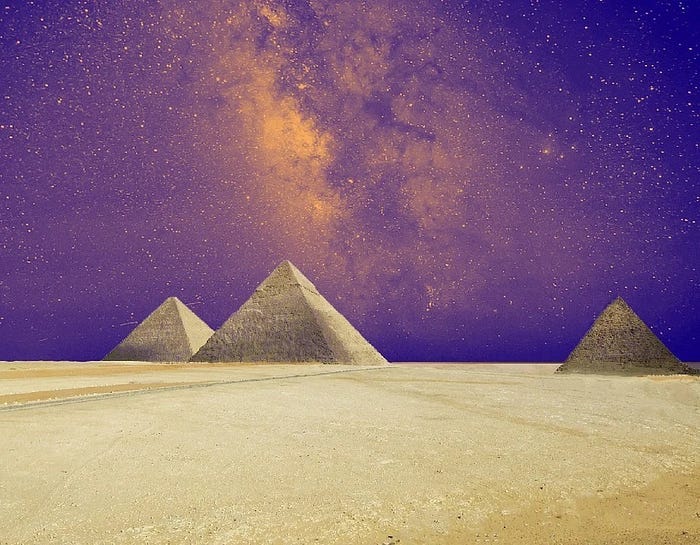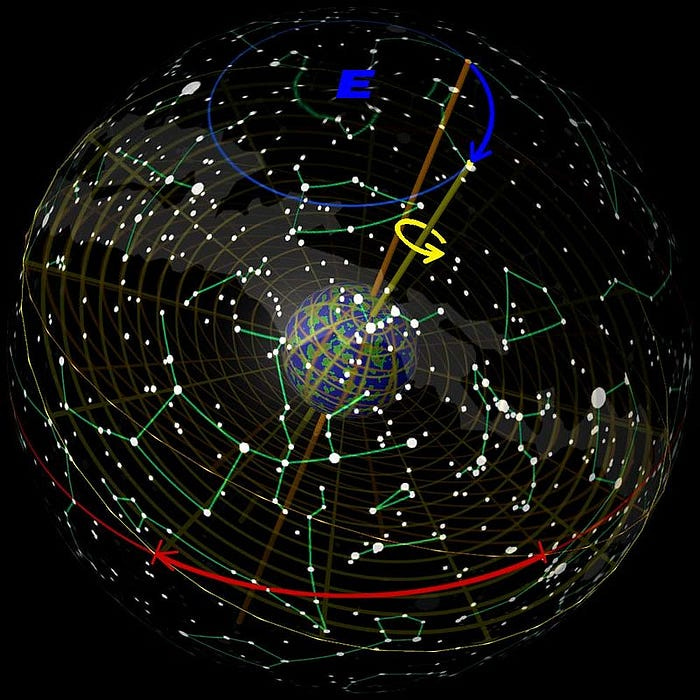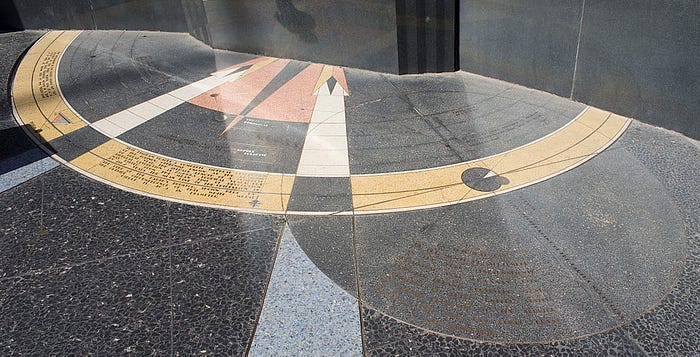The Ancient Egyptians Had a Different North Star
Our minds and bodies may not change, but our guiding star does

The North or Pole Star holds an important position for plenty of reasons. Due to the fact it doesn’t change its position in the sky, it’s been used for countless years as a navigation tool. Additionally, psychology and philosophy also use it as a metaphor for a solid and unchangeable ideal to follow in your life.
As Chiara Viscomi on Healthpsych.com says:
“Just as the literal North Star provides direction and helps us stay on course, so does our inner North Star. It’s our inner compass; the part of us that knows our passion, purpose, and life direction.”
Ancient societies, particularly the Egyptians, also felt the same way about the Pole Star. However, this idea about it being solid and never changing isn’t exactly correct. The North Star the Egyptians looked to at points during their long history was different than ours. Moreover, they may not even have had one at certain periods.
Due to the celestial phenomenon called the “precession of the equinoxes,” our Polar Star happens to change in a period of thousands of years. For the Egyptians, their guiding star happened to be Thuban for points in their various kingdoms. For us it’s Polaris. In 12,000 years Vega will be the guiding star for our distant successors.
The story of something as simple as a star on the horizon can tell us a tale of the ancients, of our present, and of our progeny. It’s also a reminder of no matter how science-minded we become, our world and lives can still be affected by the transit of the stars. But in actuality, the Earth changes the appearance of the heavens.
The Precession of the Equinoxes
So, how does this transformation work? First, let’s imagine the Earth for a second. You know it rotates — obviously, since we have day and night. However, the Earth is also tilted as it spins on its axis. Think of a top or bottle cap’s spin right before it falls. If you put an arrow at the top of the planet, it would draw a circle around a selection of sky.

As the astronomy department at the University of Lincoln Nebraska points out, the Earth’s orbital tilt is 23.5 degrees. This is because our planet isn’t a perfect sphere, it’s got some baby fat around its middle. The gravity of the Sun and Moon pull against this, pushing our imaginary arrow at the top of the planet to wobble and trace out a cone.
In a period of about 26,000 years, the cone is complete. So, although it may look like the stars are moving, it’s actually the earth completing a rotation of sorts. The Encyclopedia Britannica explains this phenomenon was discovered by Hipparchus in 129 BC. The Greek astronomer noticed different star positions than earlier notes taken by the Babylonians. So, our closest Polar Star changes with this advance.
The orange pole angle below indicates where Thuban was about 5,000 years ago. The green indicates where Polaris is now. Eventually, this angle will change again giving future humans another North Star. However, in between, there may be periods where there is no true star in position as a guide.

The Ancient Egyptians and the “Indestructibles”
The Egyptians, long ago, were expert sky watchers for a reason. They needed to calculate the times of the year the Nile would flood for agricultural purposes. In addition, knowing the true North also served a purpose in helping pharaohs attain the afterlife. The stars made this possible.
In his article in the Guardian, Tim Radford interviews Egyptologists Toby Wilkinson and Kate Spence who say the pyramids acted as launch pads of sorts for the pharaohs’ spirits. The structures were also strongly associated with stars.
Their foundations are oriented to the North Star.
The Egyptians themselves gave pyramids star-themed names like “the gleaming” or “pyramid that is a star”.
Estates created to finance pyramid building had names referencing stars.
Spence also found a riddle within the foundations of the pyramids possibly related to the precession of the equinoxes. All the structures are oriented to the North, however, some are more accurate than others. The Great Pyramid of Giza appears to be the most accurate.
In an interview with BBC News, she explains she has a theory that the Egyptians used a series of stars to align the pyramids. They called them the “Indestructables”. She says two, in particular, are always visible and circled Polar North.
Spence says due to the special nature of the stars they:
“became closely associated with eternity and the king’s afterlife. So that after death, the king would hope to join the circumpolar stars — and that’s why the pyramids were laid out towards them.”
She says a stick could be pointed in the area of the stars (Kochab and Mizar). Eventually, the stars would rotate into a place where one sat ten degrees above and another ten below the stick. At this point, the stick pointed true North and could be used to mark the location. According to Spence, these stars had their closest alignment to the true north in 2,467 BC.
So, pyramids built before or after gradually got less accurate in positioning. As a result, she believes the Great Pyramid was built close to this date — within a decade of 2,480 BC specifically. The Ancient Egyptians likely never noticed any miscalculations. As time passed, they continually got further away.
Another Construction Effort With The Stars

Strangely, this construction procedure hasn’t gone totally out of favor. The Hoover Dam has an excellent example of this architecture today. What’s more, it has a chart marking out the almost 26,000-year precession of the equinoxes. It identifies the date of its completion with the star positions on that exact date. Odds are, nobody even notices it.
In Alexander Rose’s article for the Long Now Foundation, he explains this complex marker is almost hidden in a plaza before the dam. Two large bronze figures sit beside a flagpole, with the procession chart laid on the ground in front of it. According to Rose, if you looked at the plaza from above, you’d see the flagpole as the celestial center with it pointing to the date of construction and Polaris — our North Star.
Rose also mentions the chart shows Thuban, indicating it was the Polar Star 5,000 years ago and Vega will be that star 12,000 years from now.
A Different Time and a Different Sky
So, we just learned an interesting lesson. Not only did the Ancient Egyptians live in a different world than we do, but they also looked at a different sky. This odd situation will repeat itself in the far future with our successors looking at a different North Star than our own. It gets even stranger when you consider what happens when Earth’s axial tilt changes.
Arvind Bhagwath in his research paper “Sacred Alignment of Religious Structures to North Star” explains 10,000 years ago the Sahara Desert had lakes and lush vegetation. Due to a shift in the Earth’s axis, the Tropic of Cancer moved downwards turning this area into a desert. Bhagwath says it’s expected to be lush and green again 12,000 years from now.
Despite the fact we and our ancestors often look to the heavens for answers, it appears the Earth may have more control. In addition, history is often thought of as a study of people, cultures, and technology. However, the wobbles of the orb we live on are also part of this history.
A sudden shift in this spinning top can change our North Star and turn garden paradises into scorching deserts. It might even throw off the eternal foundation of your pyramid.
-Originally posted on Medium 12/31/20


